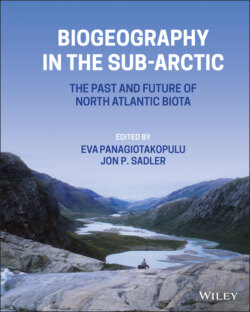Читать книгу Biogeography in the Sub-Arctic - Группа авторов - Страница 30
Summary
ОглавлениеNo serious discussion of the Atlantic opening was possible before adoption of the plate tectonic theory some 50 years ago. Since then studies have demonstrated that sea‐floor spreading has not been simple and that the concept of a mantle plume appears critical to its understanding. Opening of the ocean was a continuation of earlier continental rifting brought about by extension. The close proximity of much of the igneous activity and rifting ‘to the old orogenic sutures and/or fronts suggests that lithospheric control was an important factor in the embryonic stages of magmatism and rifting’ (Hansen et al. 2009).
It has become realized that the Iceland plume is a dynamic phenomenon that has controlled the vertical movements of European, Greenlandic and Canadian continental rocks. Its arrival was responsible for the high heat‐flux and the consequent large‐scale magmatism around the Palaeocene/Eocene boundary. Furthermore, it has had a major influence on the ocean and the atmosphere. Indeed, the plume can be figuratively envisaged as a vigorous organism that, at an age of ~60 Ma, not only has the potential for continued ocean widening but, as we are reminded by the recent Eyjafjalljökull eruption (a very minor one in the Icelandic record for the past millennium), can have a considerable impact on society.
